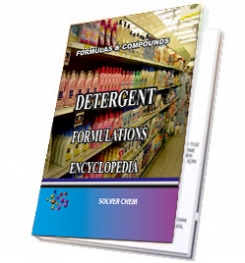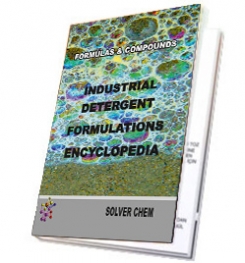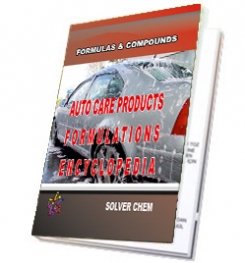Clean clothes are important to everyone. Getting clothes clean is not hard if the correct methods and laundry products are used. Water and detergent are the basic ingredients for getting clothes clean, so the types of water and detergent used are very important.
WATER
Amount of Water
Good washing action requires plenty of room for clothes to move around, so never crowd the wash tub. The washing solution must be able to circulate through clothes to loosen and carry away soil. Modern fabrics need even more room to move around than other fabrics. Set the water-level control on the machine for the size of the load to be washed.
Water Temperature
Hot water
- Removes dirt from heavily soiled items.
- Kills more germs than cold water.
- Fades the dyes in some colored clothes.
- Tends to cause wrinkling in some modern fabrics such as permanent press.
Warm water
- Usually gets lightly soiled clothes clean.
- Does not kill germs unless a disinfectant is added.
- Is safe for most colored clothes.
Cold water
- Requires a cold water detergent to get clothes clean. If a cold water detergent is not available, dissolve detergent powder in hot water before adding it to the wash water.
- Requires more detergent than warm water to get clothes clean.
- Does not kill germs unless a disinfectant is added.
- Recommended for washing some delicate fabrics.
Note: Water reaching the washing machine is cooler than in the water heater. For very hot water in the washer, it may be necessary to set the water heater temperature on high.
Water Types
There are two main types of water: hard and soft. When using soap rather than detergent, soft water cleans clothes better than hard water. Hard water, which contains mineral deposits, requires more soap or detergent, and clothes don't get as clean as they do in soft water. Minerals in hard water combine with soap to form a scum, which causes laundry problems. Detergents work well in soft or hard water unless the water is especially hard.
Water Softeners
Packaged powders can be purchased to soften water, or a water softening machine can be purchased or rented. Figure out how much the powders would cost and compare that with the price of a machine.
Water softening machines use salt to remove minerals from the water, so the salt content of household water is increased by the softening process. Persons who are on low sodium diets may prefer to use packaged water softeners.
Packaged water softeners come in two types: precipitating and non-precipitating softeners (water conditioners).
Precipitating water softeners settle out the minerals that make water hard. The water becomes cloudy. These softeners work better in non-automatic wringer washers than in automatics because you lift the clothes out of the water instead of spinning the water out of the clothes.
How to Use Water Softener
When using a powder, follow directions on the package. Add the softener to the water before adding soap or detergent. Add enough softener to make the water feel slippery. For best results use a water softener in the rinse water, too. Mechanical water softeners soften water as it flows through the machine. Follow operating instructions carefully and replenish salt as recommended.
SOAP AND DETERGENT
Water works with soap or detergent to get clothes clean. Soaps and detergents loosen dirt from clothes, keeping dirt in the wash water so it doesn't get back on the clothes.
Choosing Soap or Detergent
Most areas of New Mexico have hard water, so use detergent rather than soap. When soap mixes with hard water, they form a soapy scum that can turn clothes gray.
An all-purpose, heavy-duty detergent does a good job of cleaning most clothes. For delicate fabrics that require hand washing, use a gentler detergent such as dishwashing detergent.
Most stores carry many brands of laundry products. All detergents contain similar types of cleaning ingredients. Detergent powders are the most common laundry product and are the least expensive. Liquid detergents are made especially for washing clothes in cold water, although they work in hot water, too.
Some people like lots of suds in the wash water. However, too many suds can cut down on washing action and are hard to rinse out. Suds may also damage the washing machine. High-sudsing detergents are not recommended for use in front-loading washing machines. Low-sudsing detergents can be used in either front- or top-loading machines.
How to Use Soap and Detergent
- Directions on the package tell how much soap or detergent to use in an average-sized washing machine with normally soiled clothes.
- Measure soap or detergent carefully. Using too much wastes money and may make so many suds that clothes don't get clean. If not enough detergent is used, body oil and dirt may not come out.
- It may be necessary to add more soap or detergent if using an extra-large machine, if the clothes are very dirty, or if the water is very hard.
White clothes and linens may turn gray if not enough soap or detergent is used or if clothes are not thoroughly rinsed. To get clothes white again, follow this procedure:
- Wash the clothes again in hot water.
- Add enough water softener to make the water feel slippery (about 1 cup).
- If the water becomes sudsy, the clothes were not rinsed enough. Wash them again adding only water softener.
- If the clothes do not whiten, add soap or detergent and rewash.
BLEACH
Bleach helps keep white clothes white and helps remove many stains. Measure bleach carefully, as too much bleach will damage clothes.
Chlorine Bleach
Chlorine bleach comes in liquid and powdered forms. A variety of house and name brands are available. All liquid bleaches contain approximately 5% active ingredient. Select the product that provides the best results.
Liquid chlorine bleaches are usually less expensive than powdered forms. They kill germs, too. Some fabrics and finishes are damaged or discolored by chlorine bleaches, so read the labels on clothes and bleach containers before using chlorine bleach.
Iron deposits in water will interact with chlorine bleach and make rust stains on clothes. Chlorine bleach also makes some yellow stains worse and may make holes in fabric.
Chlorine bleaches may be used on:
Dish towels Bath towels
Sheets Color-fast prints
Pillowcases Tablecloths
White socks T-shirts and undershirts
Other chlorine bleach-safe items
Caution: Do not use chlorine bleach on silk, wool, spandex stretch fabrics, blends of these fibers, or fabrics with certain dyes and finishes. Check clothes labels and hang-tags to determine if they can be safely bleached.
How to Use Liquid Chlorine Bleach
For most top-loading washing machines, do not use more than 1 cup of liquid chlorine bleach. If the machine is extra large, use 1-1/4 cup of bleach. For front-loading machines, do not use more than 1/2 cup liquid bleach. For hand washing, do not use more than 1 tablespoon of bleach per gallon of water.
Mix the bleach with lots of water before mixing with soapy wash water. Otherwise the bleach may make holes in the fabrics.
Rinse clothes well to remove the bleach, as it may weaken the clothes if it stays in them.
Oxygen Bleach
Most oxygen bleaches are powders. They can be safely used on any clothes that need bleaching and are safe for all fabrics, fabric finishes, and colored fabrics. Look for the words, "Safe for all fabrics" on the package. A variety of oxygen bleach products are available.
How to Use Oxygen Bleach
- Add oxygen bleach to the wash water.
- Most oxygen bleaches work best in hot water.
- Follow directions on the package.
- Rinse the clothes well.
- For best results, use oxygen bleach each time the items are washed.
FABRIC SOFTENERS
Fabric softeners and water softeners are not the same. Fabric softeners make clothes soft and fluffy and reduce static electricity that makes clothes cling. Water softeners, however, remove mineral deposits from hard water.
Fabric softeners come as liquids, dryer sheets, and in dryer dispensers. Liquid fabric softeners are added to the final rinse water of the washing cycle. Fabric softener sheets are added to each drying cycle. Fabric softener dispensers are fixed to the side of the dryer and soften laundry for several drying cycles before they must be replaced.
Cautions
- Follow the package instructions carefully for best results.
- To prevent spotting, be sure to dilute liquid softener in water before adding it to the laundry.
- Dryer sheets may cause oily spots on some fabrics.
- Check garments carefully as they are removed from the dryer. If spots occur, rub them with a detergent paste and rewash.
SORTING AND INSPECTING LAUNDRY
Sort and check all clothes before putting them into the washer. This will help keep clothes looking nice longer. Choosing the right water temperature for different fabrics and treating stains before laundering also keep clothes looking nice.
How to Sort Clothes into Groups
- Test colored clothes to see if the colors run. If they do, wash them separately or with other clothes of the same color.
- To keep white clothes bright, don't wash them with colored clothes.
- Do not wash lightly soiled clothes with those that are heavily soiled.
- Sort clothes that shed lint from those that don't.
- Separate delicate items from sturdy ones.
- Don't overload the washer. Each load of clothes should have enough room for good washing action.
- Mix small items with large ones for good washing action. For example, put wash cloths and towels in with sheets.
Inspect Every Item
- Empty and brush out pockets and cuffs.
- Mend small rips and tears.
- Remove pins and ornaments.
- Close zippers and hook fasteners.
- Check for stains that may need special attention.
Pretreating and Removing Stains
Before washing, rub heavily soiled areas such as shirt collars or cuffs with a wet bar of soap, liquid detergent, or a paste made with powdered detergent and water. This will loosen heavy soil.
On permanent press clothes, pretreat grease spots with soap or detergent and let stand for at least two hours.
Guides for Removing Stains
The sooner a stain is treated, the easier it is to remove. These stains can usually be removed by pretreating with soap or detergent:
Cosmetic Crayon Grease
Ice Cream Oil Grass
Milk Light scorch
If the clothes are still stained after they have been washed and rinsed, try using a bleach. Read the label on the bleach container to be sure it is safe to use on the stained clothes.
If fresh blood, egg, catsup, or soft drinks stain washable clothes, soak the stained spot in cool water for half an hour or more. Then rub gently. If the stain doesn't come out, work soap or detergent into the cloth. Then rinse.
Do the same for chocolate, soup, and gravy stains. Let the clothing dry. If a greasy stain is still there, sponge gently with a non-flammable, dry cleaning fluid, which can be purchased at drug or grocery stores. Follow directions on the label carefully.
Coffee, tea, and fruit juice stains will usually come out after soaking and rubbing. However, if boiling water won't hurt the cloth, there's a faster and easier way to remove these stains. Hold the cloth over a sink or bucket and pour boiling water through the spot. Pouring the water from about two feet above the spot will force the stain out.
ELIMINATING GERMS FROM CLOTHES
Boiling clothes or hanging them in the sunshine were once common ways to get rid of germs. With modern fabrics, fabric finishes, and washing methods, other ways can be used to disinfect the family laundry. Liquid chlorine bleach that contains 5.25% sodium hypochlorite will destroy most germs. Quaternary, pine oil, or phenolic disinfectants can be safely used on any washable fabrics. Pine oil disinfectants must contain at least 80% pine oil to destroy germs.
It is always a good idea to use a disinfectant in the wash when someone in the family has a bad cold, the flu, or some other infectious illness. Disinfecting the wash will help prevent other family members from getting the same illness.
Use a disinfectant when washing at a laundromat. Illness from another family can be passed on if the washing machine is not disinfected before it is used. Wipe off the surface of the machine with a disinfectant, then add disinfectant to the wash cycle. Follow the directions on the disinfectant's label.
What to Use to Destroy Germs
Quaternary disinfectants ("quats"), are available. CO-OP Sanitizer is available in certain supermarkets; Roccal is available from janitor, dairy, and poulry supply houses.
The following liquid chlorine bleaches are available in grocery stores: Clorox, King (liquid) Bleach, Purex.
The following pine oil disinfectants are available in grocery stores: Fyne Pyne, Fyne Tex, White Cap, King Pine.
The following phenolic disinfectants are available in grocery stores: Al Pine , Pine-Sol.
Check local supermarkets or drugstores for "house brand" products, too.
RELATED TAGS : HOW TO REMOVE STAİNS FROM CLOTHES,HOW TO MAKE DETERGENT FOR CLOTHES,DESTROY GERMS WITH DETERGENT,DESTROY GERMS WITH CHEMICALS,TO MAKE CHEMICALS FOR GERMS,HOW TO USE DESTROY GERMS,WHAT İS GERM,ELIMINATING GERM WITH DETERGENT OR CHEMICALS.HOW TO MANUFACTURING DETERGENT,PROPERTIES OF DETERGENT,POWDER DETERGENT MAKING,LIQUID DETERGENT.
powder detergent,
DETERGENT
FORMULATIONS
ENCYCLOPEDİA
is enough.
This encyclopedia has many formulations of dishwasher cleaning products,dishwashing liquid production,kitchen cleaner products,laundry produts, powder laundry detergent,gel laundry detergents,liquid bleach products,powder bleach products formulations,surface cleaner products manufacturing process,multipurpose cleaner products,metal cleaners,bathroom cleaning products formulations,liquid soap formulations,antibacterial soaps,carpet shampoo,carpet cleaner detergent manufacturing processes, etc.
All detergent in the encyclopedia are producible easily.You need no help and no technıcal support. The encyclopedia is enough to produce liquid and powder detergent itself.
DETERGENT
FORMULATIONS
ENCYCLOPEDIA
is written clear and understandable.
RELATED TAGS: What is powder detergent, how to make powder detergent, making powder detergent, powder detergent manufacturing process, powder detergent production, formulations of powder detergent, types of powder detergent, anionic surfactant, detergent dyes, detergent fragranges, how to make powder detergent, preparation of powder detergent, cationic surfactant, anionic surfactants, detergents ingredients, how to use detergent ingredients, where to use surfactants, properties of powder detergent, machine of powder detergent, how to make powder detergent mixer, composition of powder detergent, production formulation of powder detergent, using powder detergent. compounds of powder detergent.
DETERGENT ENCYCLOPEDIAS AND CONTENTS


E - BOOKS AND HARD BOOKS
HOW TO BUY
DETERGENT ENCYCLOPEDIAS AND VIDEOS

|
|

|
|

|
|
